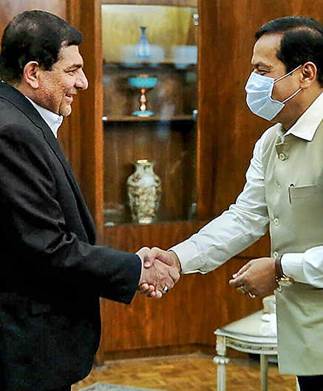Free Courses Sale ends Soon, Get It Now


Free Courses Sale ends Soon, Get It Now



Copyright infringement is not intended
Context: In a bid to aid the movement of seafarers between the two countries, India and Iran signed a memorandum of understanding on recognition of Certificates of Competency in Unlimited Voyages to help seafarers from both countries as per the provisions of the International Convention on Standards of Training, Certification and Watch Keeping for Seafarers, 1978.
Details:
Chabahar Port:
Background:
Political relations
Bilateral Consultative Mechanisms
Defence relations
Economic and Commercial Relations
Humanitarian Assistance
Indian community
https://epaper.thehindu.com/Home/ShareArticle?OrgId=G6HA6BH8S.1&imageview=0
© 2024 iasgyan. All right reserved